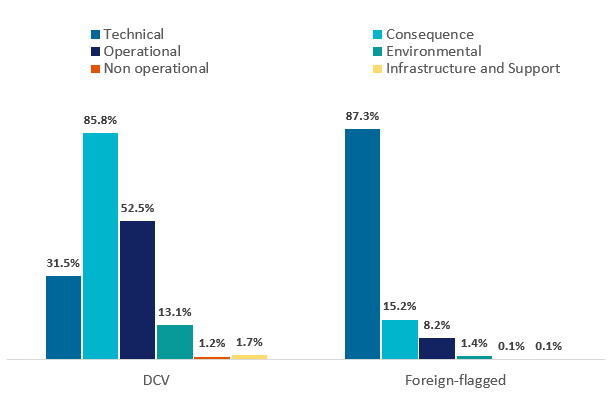AMSA classifies all reported marine incidents into one or more “occurrence type” categories to consistently describe what happened. This provides a description of what happened and helps identify patterns and areas for further investigation.
In addition to classifying types of incidents based on what happened, AMSA reviews investigation reports into DCV incidents to identify how and why the incident occurred. Marine incidents are a result of many factors and underlying safety issues that often are not directly linked to the incident – such as organisational issues. To capture underlying safety factors, AMSA developed a maritime safety framework based on research and data to classify investigation findings.
Marine incidents by occurrence type – analyses and findings
As indicated all marine incidents reported to AMSA are coded using the occurrence type framework. High level occurrence types include technical, operational, non-operational, consequence, environmental and infrastructure and support. Consequence occurrence sub-types include consequences to people and consequences to the vessel.
While 87.3% of incidents reported from foreign-flagged ships were classified as technical, 85.8% of incidents reported from DCVs were classified as operational. This suggests foreign-flagged ships will report technical incidents even when they do not result in consequences; whereas DCVs are less likely to report incidents that do not result in consequences.

This overview and the annual incident report focus on consequence, technical and operational occurrence-types and their sub-types as there is limited data associated with the other types.